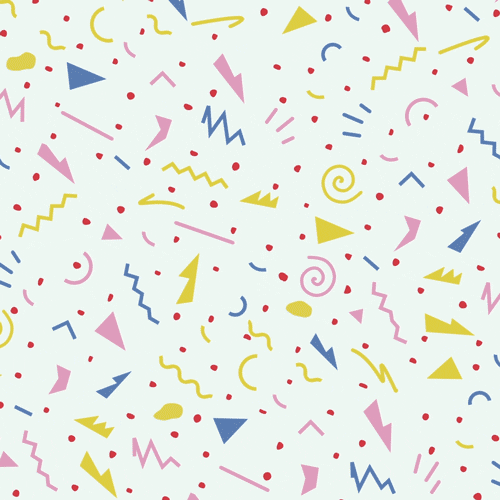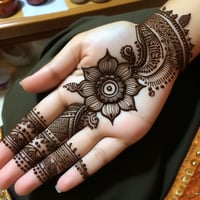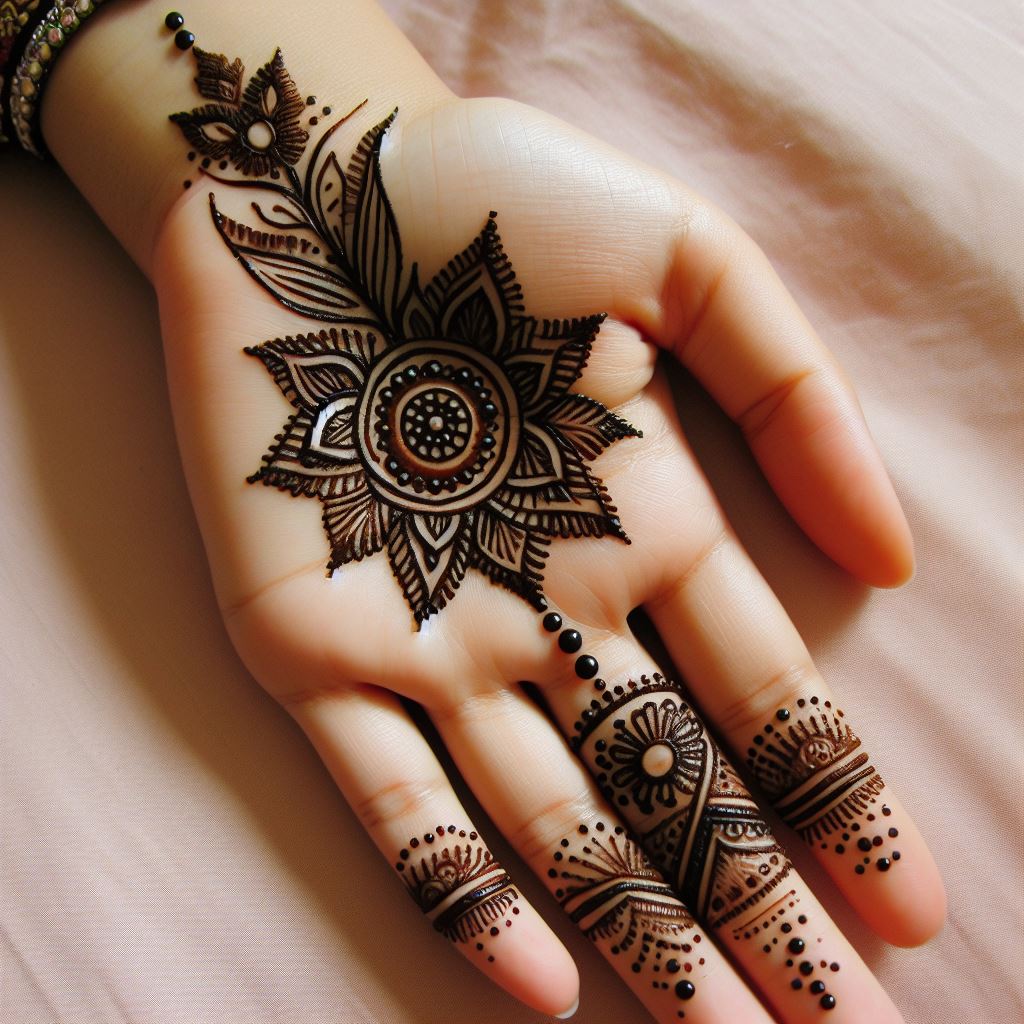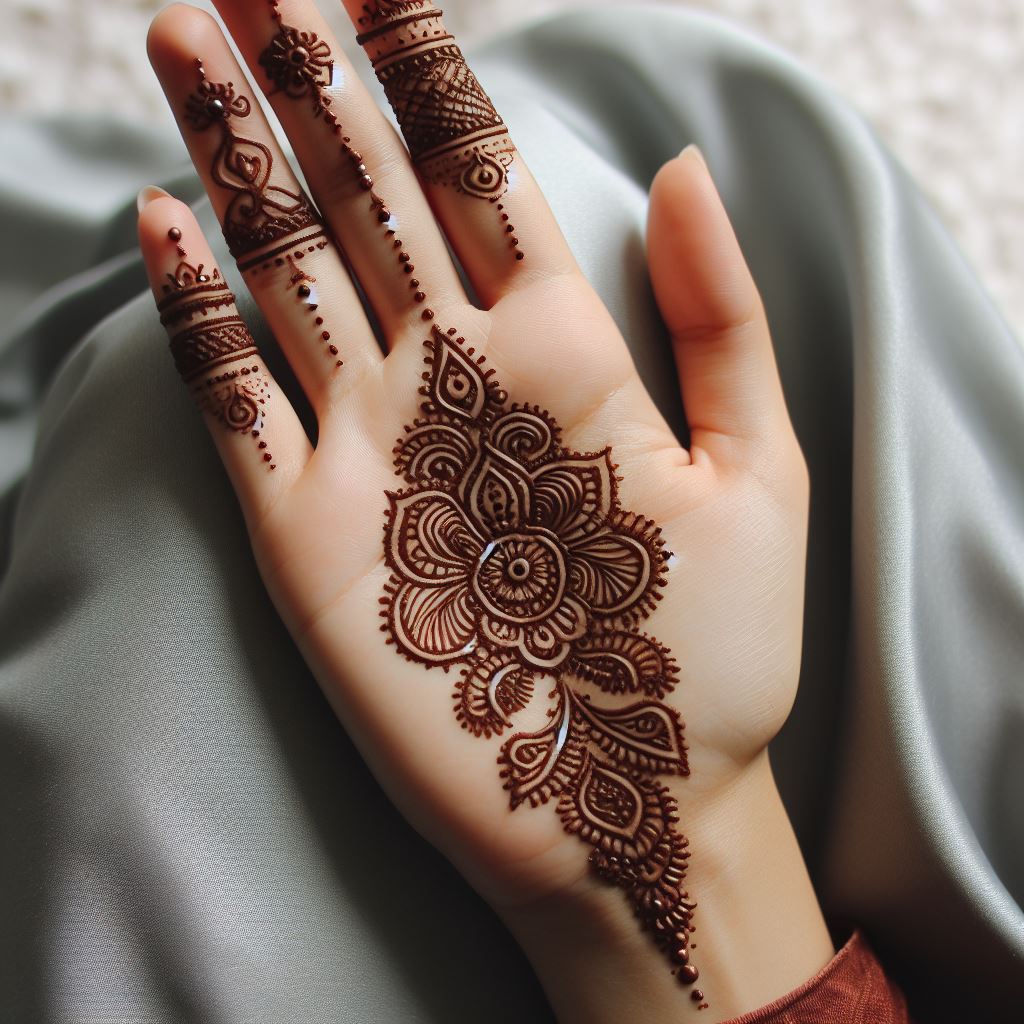

Small hand mehndi design
Mehndi Design World
The Versatility of Small Hand Mehndi Designs on the Wedding Day
Small hand mehndi designs have become an indispensable part of wedding celebrations, adding a touch of elegance and tradition to the joyous occasion. Mehndi, also known as henna, holds significant cultural importance in weddings across various cultures, and its intricate patterns symbolize more than just decorative body art. This ancient form of body adornment, with its roots deeply embedded in history, brings forth a myriad of benefits and holds a special place in the hearts of those celebrating the union of love.
Why is mehndi important in weddings? The application of mehndi is a cherished pre-wedding ritual in many cultures, symbolizing love, prosperity, and the bond that is about to be formed. The deep red hue of the mehndi signifies the strength of the marital bond and is believed to bring good fortune to the couple. The application process itself is a joyous occasion, where family and friends come together to celebrate and create beautiful memories. The bride, in particular, experiences this ritual as a moment of reflection and anticipation, as the intricate designs are carefully applied to her hands, marking the beginning of a new chapter in her life.
What do mehndi patterns symbolize? Mehndi patterns are not merely ornamental designs; they carry profound symbolism and cultural significance. The intricate motifs often include elements representing fertility, love, and the prosperity of the couple. Peacock feathers, flowers, and paisley patterns are commonly incorporated, each holding a unique meaning. The peacock, for instance, symbolizes beauty and grace, while flowers signify new beginnings and the blossoming of love. Every swirl and curve in the mehndi design tells a story, adding a personalized touch to the overall celebration.
The benefits of mehndi art extend beyond its symbolic significance. The natural properties of henna have been known to have a cooling effect on the body, making it a practical choice for weddings held in warmer climates. Additionally, mehndi is believed to have medicinal properties, promoting skin health and acting as a natural stress reliever. In the midst of wedding preparations and the flurry of emotions, the application of mehndi becomes a therapeutic experience for the bride and her entourage.
Small hand mehndi designs, in particular, have gained popularity for their versatility. While elaborate mehndi patterns covering the entire hand and arm are stunning, the charm of small hand designs lies in their subtlety and grace. These designs are perfect for brides who prefer a more understated look or those with time constraints. Small motifs, strategically placed on the fingers or the palm, can be equally intricate and meaningful, showcasing the artistry of the mehndi artist in a compact form.
So, why do people decorate their hands with henna? The allure of mehndi extends beyond tradition; it is a celebration of culture, art, and the union of two souls. Decorating hands with henna is a way of honoring the past while embracing the future. The rich cultural tapestry woven through mehndi patterns transcends borders, making it a universal symbol of love and togetherness. Whether it's the elaborate designs that adorn the hands or the simplicity of small hand mehndi designs, each stroke of henna adds a layer of beauty and significance to the wedding day.
In conclusion, small hand mehndi designs bring a touch of versatility to wedding celebrations. They embody the rich cultural heritage and symbolism associated with mehndi, providing not only aesthetic appeal but also a deeper connection to tradition. As brides embark on the journey of a lifetime, the small hand mehndi designs serve as a reminder of the intricate, meaningful, and timeless art that accompanies the joyous occasion of a wedding.

Small hand mehndi design
